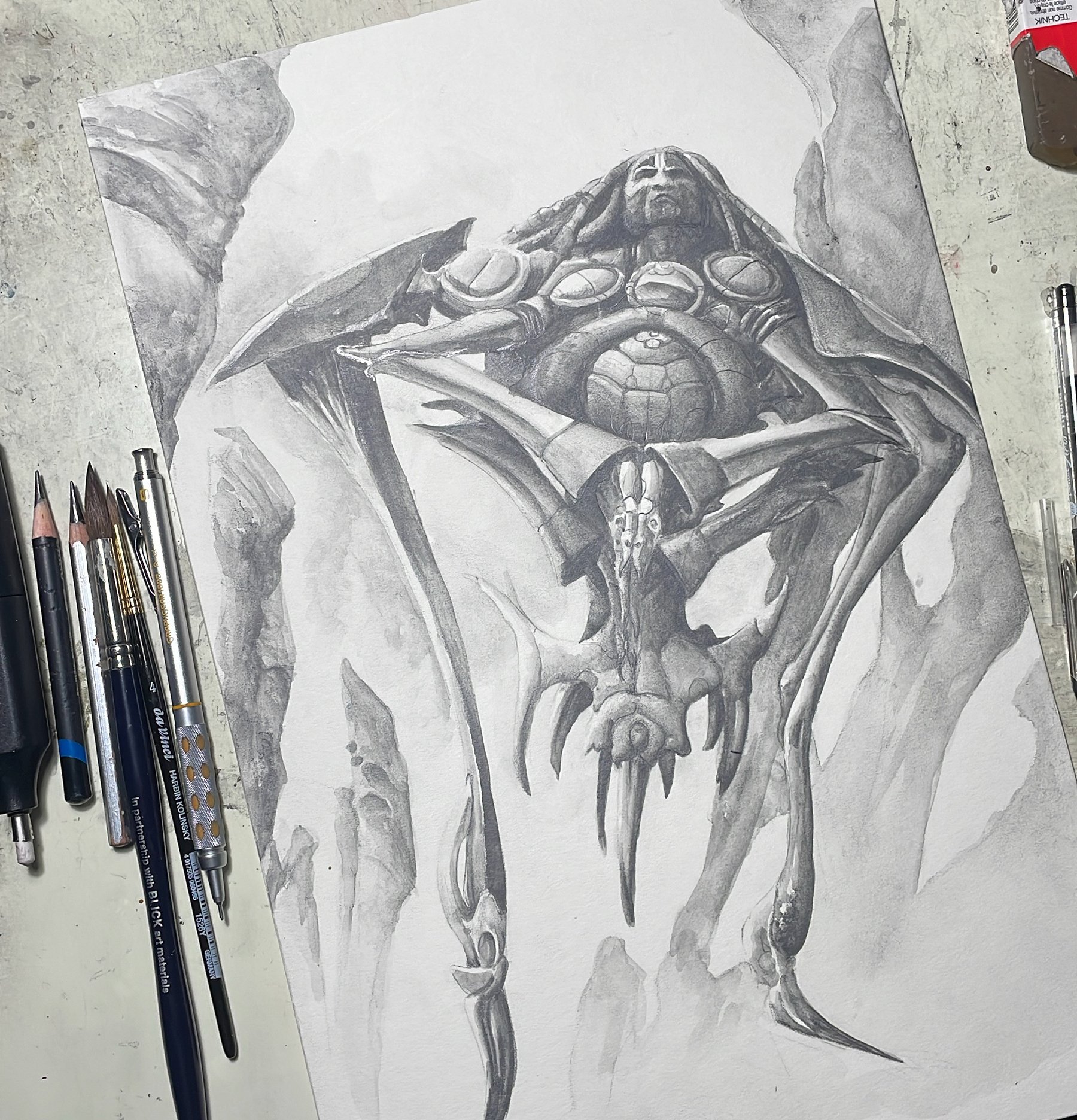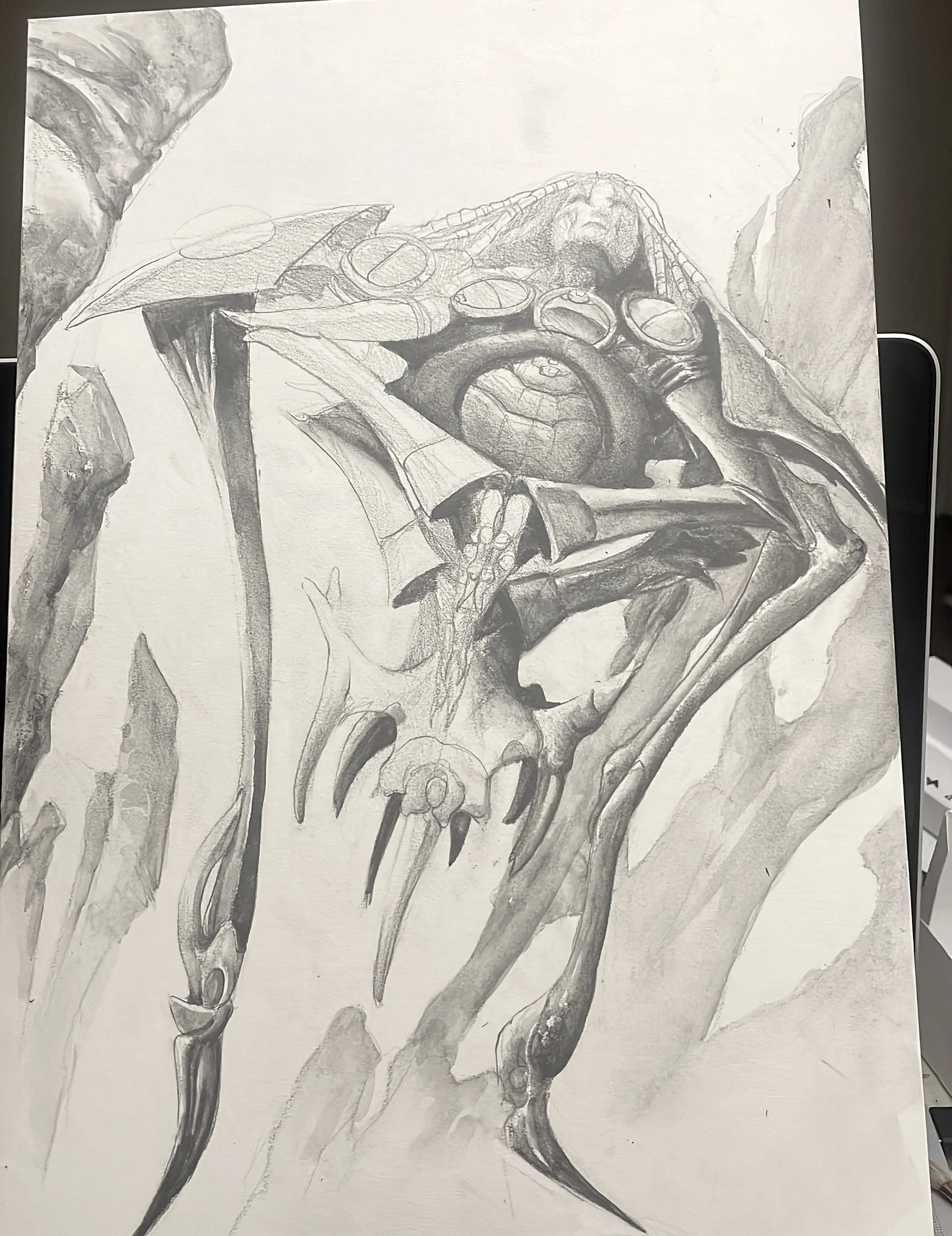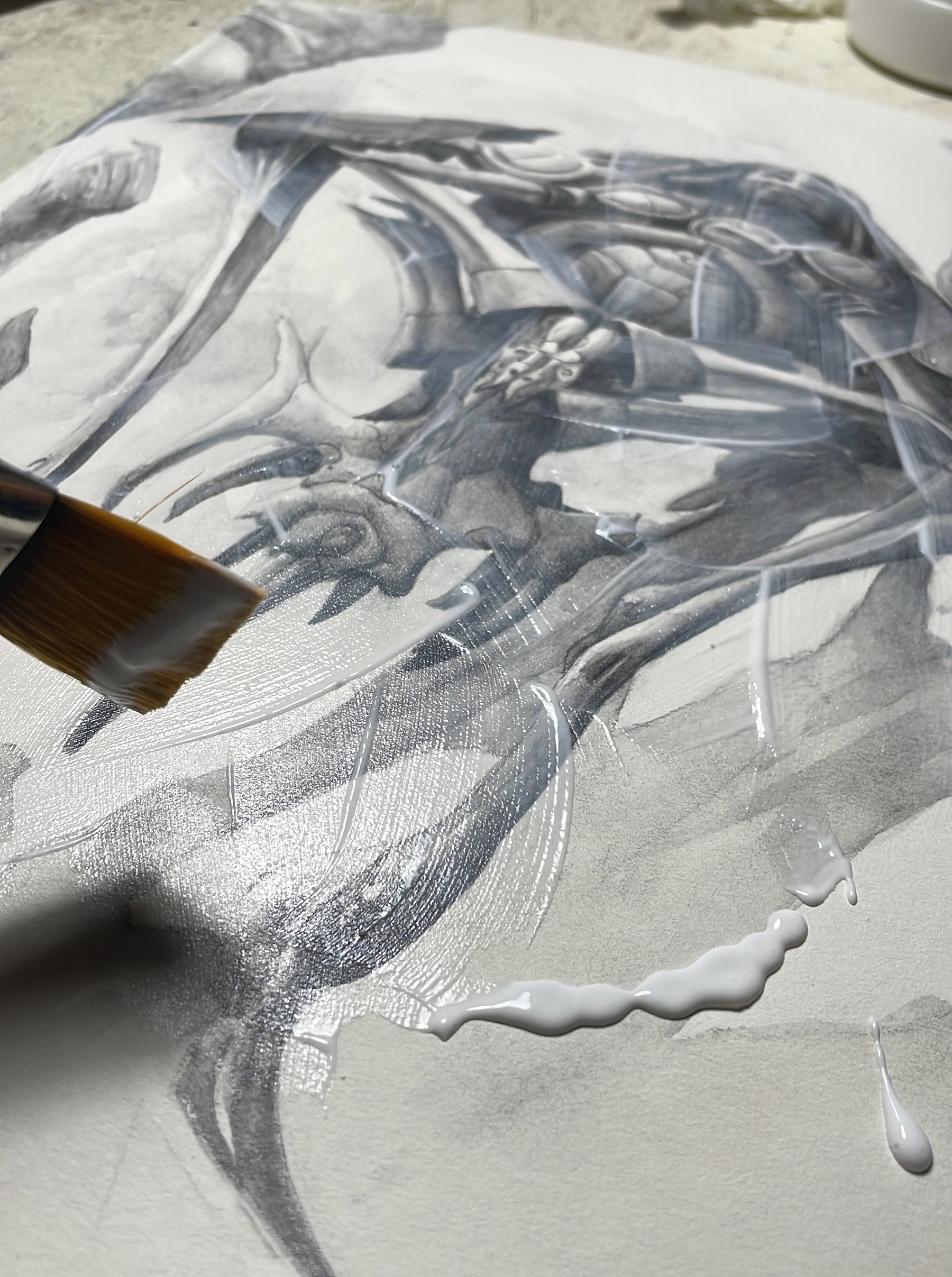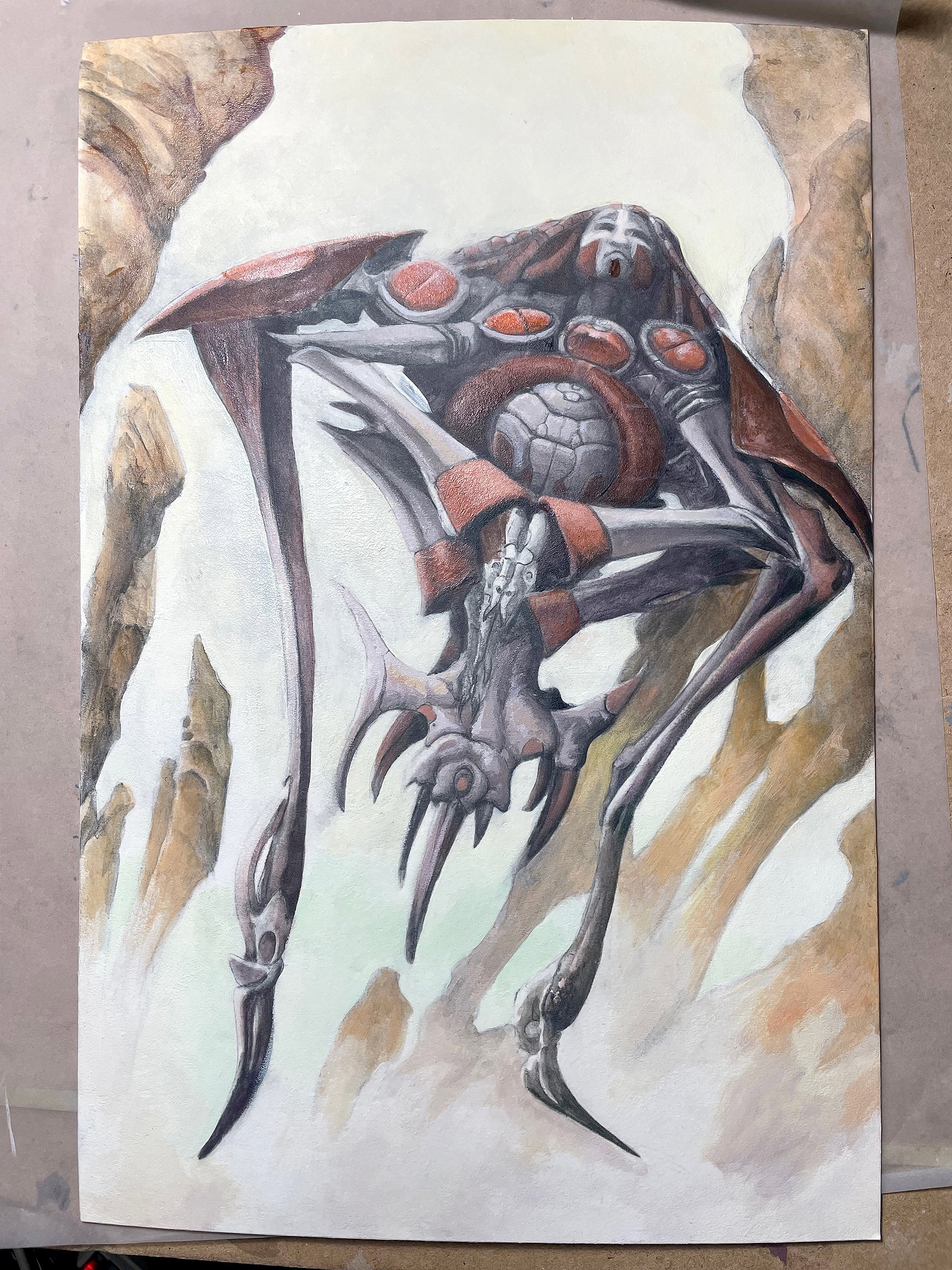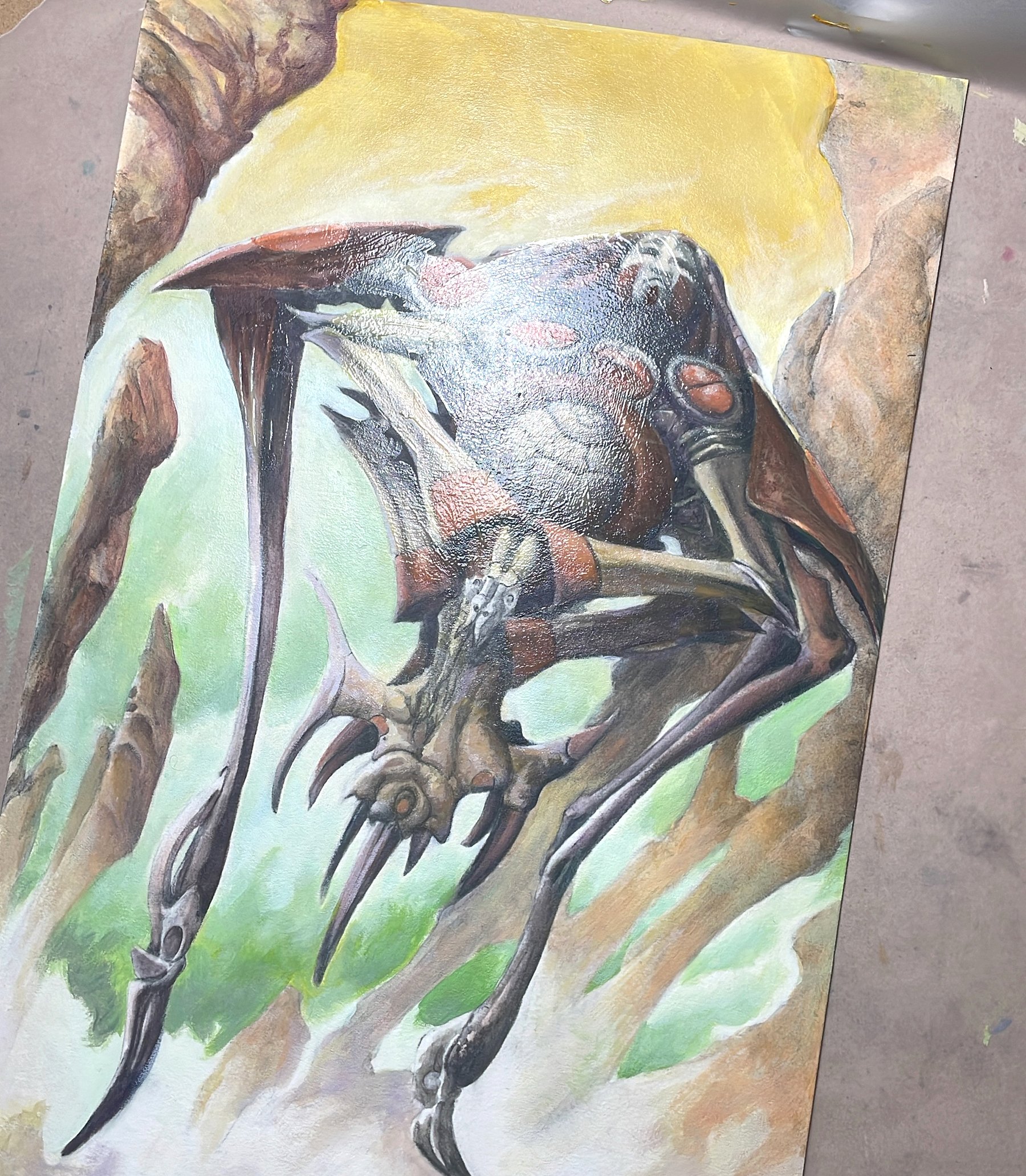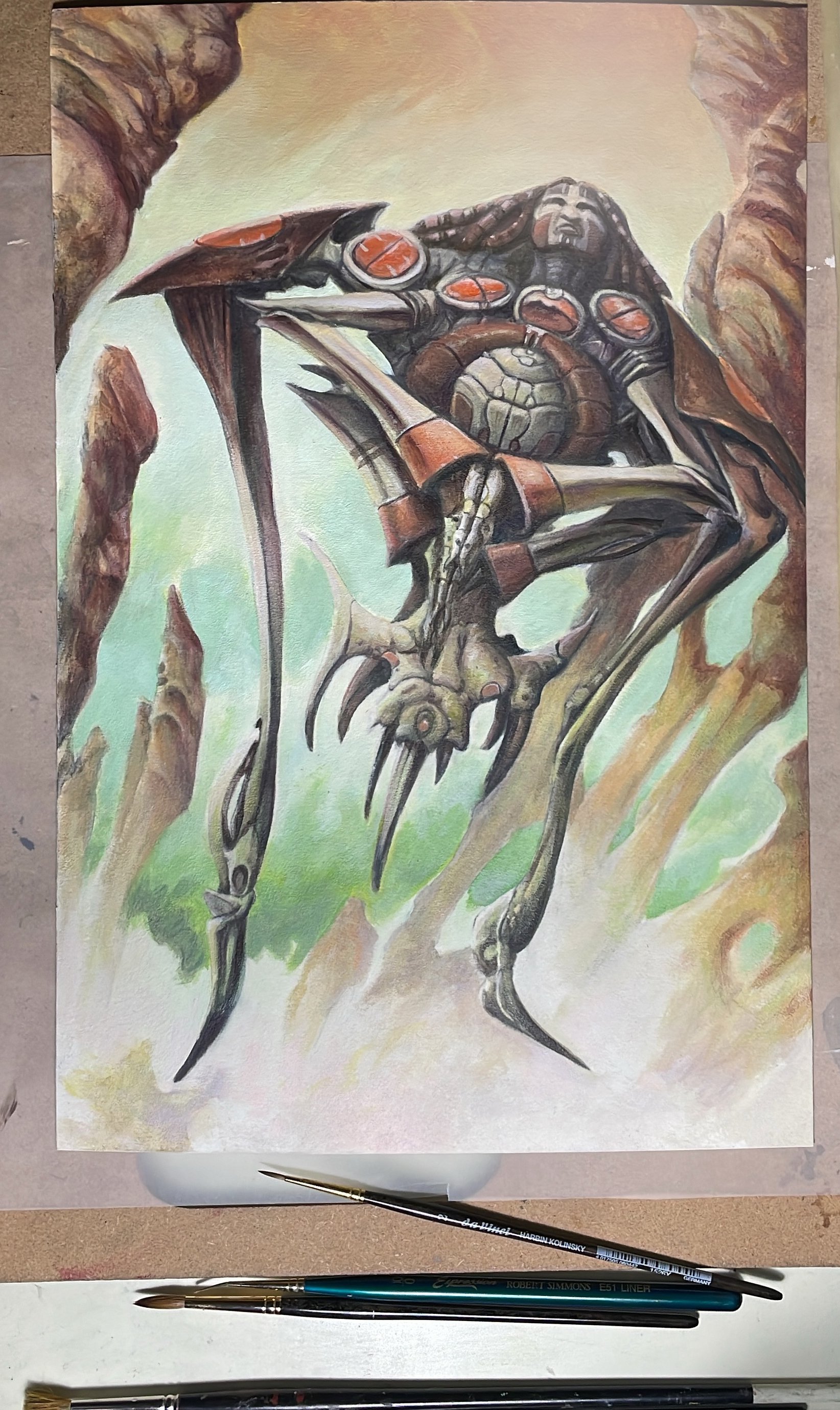I recently decided to take a hovering mech sketch done during WonderCon 2022 into acrylics. I completed the piece over the course of a week, working in roughly 1- to 2-hour spurts.
The Underdrawing
With the underdrawing completed, I still feel like the right side of the mech needs to be even more in shadow. The face has also lost the roundness and appeal in the original sketch. But I am happy with the armored crustacean-like feel of this design.
The anime series Raxephon included the "dolems" which were massive, floating mechs that reminded me of ancient Mediterranean figurines and ceramic ware. They had a majestic and eerie elegance that left a lasting impression me.
Sealing the Underdrawing
My discovery of clear gesso came at a time when I was still reluctantly relying on spray fixative to seal graphite drawings for glazing with acrylics. I first saw the spray fix used in a demo from my copy of Hajime Sorayama's self-titled softbound book of erotic pin-ups and sexy chrome robots. After several developing the final idea via sketches on tracing paper, Sorayama rendered his illustrations with crisp precision using a hard graphite pencil directly on the bare illustration board. Spray fixative protected the drawing from subsequent layers of acrylic paint. The technique was both efficient and effective in achieving his iconic "hyper-real" look. I learned from his demos how good reference and masterful drawing techniques support realism. His use of acrylics instead of oils was also a good fit for me as I toiled away on my bedroom floor, or in the chilly garage of my parent's house. While I knew a bit about oil's superior blending and relative consistency of color as it dried, I had concerns about the longer drying time, clean-up, and odors from the solvents.
My approach to this kind of painting borrows heavily from Sorayama's process. One significant difference is the use of water-soluble graphite pencils which become permanently affixed to the surface after water is applied. I like being able to achieve smooth gradations of value with just water. Another advantage is how the tooth of the paper can either be exploited as texture or overridden with a watercolor technique. I had actually tried unsuccessfully to formulate my own graphite-based watercolor before coming across a "liquid pencil" product that actually worked. The pencil option let me easily layout, render, and edit a drawing until I am ready to "paint" it in.
I used to carefully brush a thin layer of acrylic medium over my drawings to seal them. If I used a soft brush, most of the drawing stayed put. However, I missed the nice, toothy texture I got from using a standard gesso ground. When I finally found a clear gesso, I was skeptical. To my surprise, it was transparent and included just the right amount pumice.
First Glazes in Acrylics
After a second coat of clear gesso and a light sanding, the board is ready for painting. As expected, I lost a significant amount of shadow detail that will either have to be reimagined in paint or ignored completely. There also seemed to be an unexpected yellow tint from the gesso, but its warmth helped to guide the spirit of the color palette and first transparent layers of paint. My goal was to keep the warm earth tones of the original ink and marker sketch, and to depict a misty, atmospheric background that suggests inhospitable sulfuric gases and other noxious vapors.
Final Stage
Fortunately, the initial value pattern from the drawing held up all the way through to the end of the process. The major forms read clearly as did most of the textures I wanted to portray.
In hindsight, I think the application of more fine details with opaque paint might have brought the piece closer to the style I enjoyed seeing on those original Japanese robot model kit boxes.
